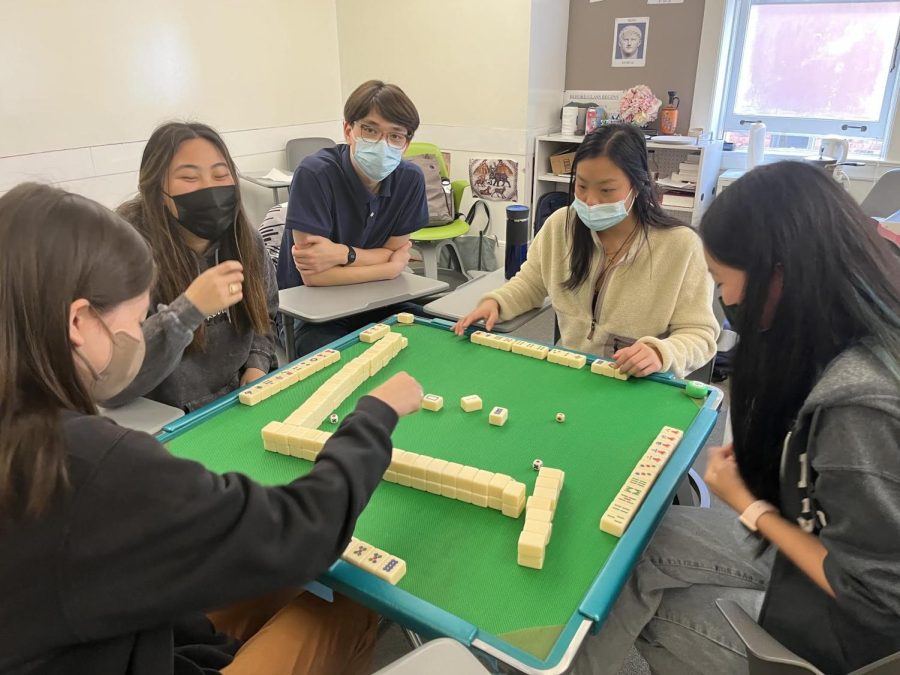Launching into Lunar New Year
Community reflects on celebrating Chinese New Year
The Mandarin IB SL and HL classes come together to play Mahjong. The game allows for up to four players at once, each having a deck of tiles with the purpose of making four combos and one pair to win.
February 3, 2022
WEB EXCLUSIVE Mandarin students learn and share with younger grades about Chinese culture by celebrating Lunar New Year.
“Chinese New Year is important to me because my family is from China, which is also where I was born,” junior Sophia Wu said. “By celebrating, I’m keeping my culture alive and spending time with family, which is super important to me.”
Chinese New Year is about coming together with family to pass into the New Year with good luck and prosperity. By celebrating with family, participants of the festival reconnect with the Chinese culture that values familial relations.
“On Monday we made dumplings, watched traditional Chinese performances, and learned Chinese New Year greetings in class,” freshman Tabitha Martin said. “We will be playing Mahjong during tomorrow’s class.”
Mahjong is a traditional strategy-based game played since the Qing dynasty in China. Playing Mahjong while counting down to the New Year is a custom for many Chinese families.
“Students bring food to share with each other like a big family, similar to a Chinese community,” Mandarin teacher Yuhong Yao said. “Our AP students brought food and sang songs for the fourth graders and lower form.”
The high school Mandarin students included younger grades by sharing their homemade dumplings. Other celebrations consist of singing traditional folk tunes, which originate from the Ming Dynasty.
“I want to bring Chinese culture into our community,” Yao said. “I feel like Chinese New Year is becoming more popular in our school through things like the lanterns I hung up around the campus. We also drew tigers, because this is the year of the tiger, and hung up posters around the school to spread awareness of Chinese culture.”
Traditional red lanterns and lanyards currently decorate the Main Hall to celebrate. The red color of the lanterns symbolizes wealth, fame, and prosperity and the circular shapes mean wholeness and togetherness. This year of the tiger embodies courage and bravery meaning the new year could bring strength and resilience even in times of struggle.
“I celebrate Chinese New Year by decorating and cleaning the house and wearing red,” Wu said. “My family also eats the seven most important foods on Chinese New Year, like rice cakes, fish, noodles, tangerines, spring rolls, and dumplings.”










